
Do you love making art and using your imagination? So do we! Every NASA mission starts with a creative idea about how to explore something in a new way.
The art challenge:
In this new activity, we'd like to challenge young explorers to think about and draw a space-related situation each month. And after the month is over, we'll select a few imaginative drawings to be featured on the NASA Space Place website!
So, get ready to exercise that creative brain of yours! Here's what you'll need:
- Paper
- Art supplies (pencils, markers, crayons, paints – whatever you like to use)
- A grownup helper with a camera or scanner and access to email
Note: We cannot accept artwork created with AI technologies.
Space Place art challenge prompt:
More than 500 million miles from Earth is a world that is covered with an ocean, topped by an icy crust. This ocean world, called Europa, is one of Jupiter’s many moons. Scientists are interested in learning more about Europa because on Earth, where you find water, you can find life. Could ocean-covered Europa have all the right conditions and ingredients for life, too?
NASA scientists are hoping to find out one day soon! Europa Clipper is a spacecraft that will study Europa. It is launching in October 2024.

Jupiter’s moon Europa as captured by the JunoCam instrument aboard NASA’s Juno spacecraft on Sept. 29, 2022. Image data: NASA/JPL-Caltech/SwRI/MSSS. Image processing: Björn Jónsson (CC BY 3.0)
This month's prompt: Europa Clipper will be orbiting Jupiter’s icy moon Europa, collecting lots of information about this special ocean world in our solar system. But imagine that you could peek below Europa’s icy surface. What do you think you might find in the vast ocean underneath? What does the ocean floor look like? Does anything live in Europa’s ocean? No one knows for sure right now! Draw an underwater scene of the ocean on Europa and what you think we might find there!
Want to learn more about Europa before getting started? Check out our Europa page!
Get creative and submit your art before September 30, 2024. Selected art submissions will appear on the website in early October!
How to submit your art:
Once you've gotten your ideas on the page, have a grownup take a photo or scan of the drawing and email the following to [email protected]:
- Picture of drawing
- First name of artist
- Age of artist
- Completed release form (download here)*
That's it! Have fun creating and we can't wait to see your drawings!
Last Month's Art Challenge Selections
DSN (Deep Space Network) Art Challenge: Draw an antenna on Earth, and the spacecraft or robotic explorer you’d imagine it would talk to.

A'lyvia, 10

Aahana, 9
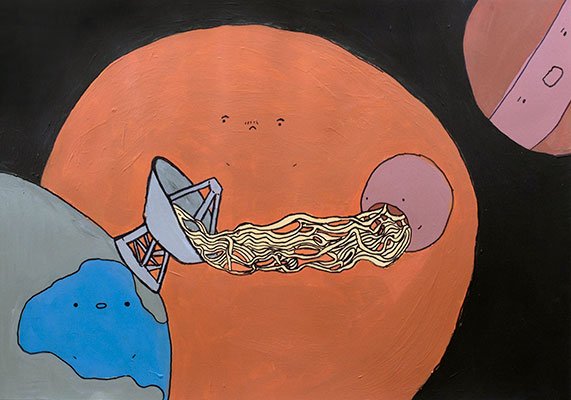
Alena, 13

Alex, 6

Anisha, 7

Atharv, 5

Charlotte, 12

Deliana, 15
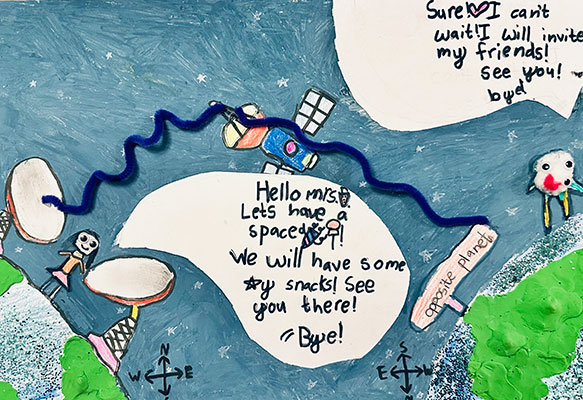
Diya, 8

Eileen, 13
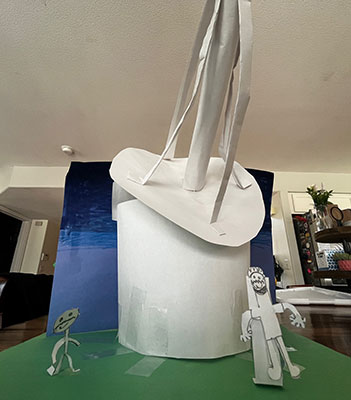
Emmett, 10
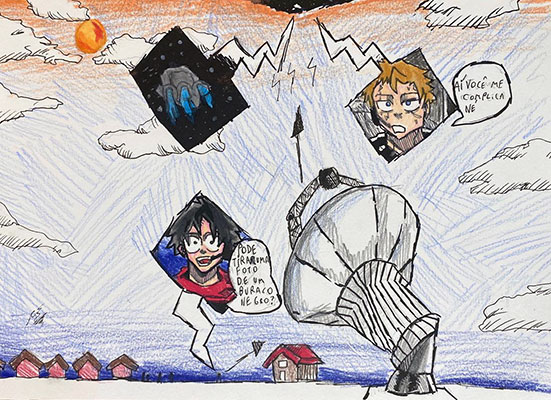
Gabriel, 13
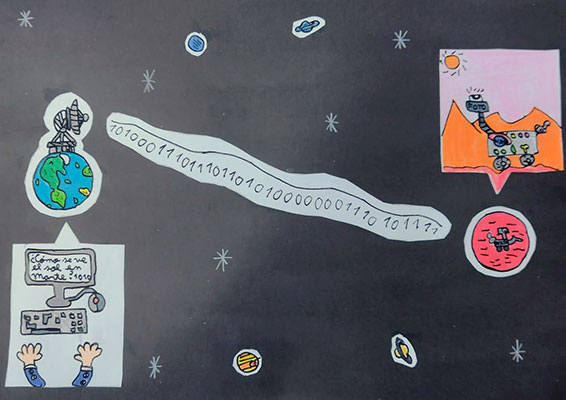
Gerardo, 10
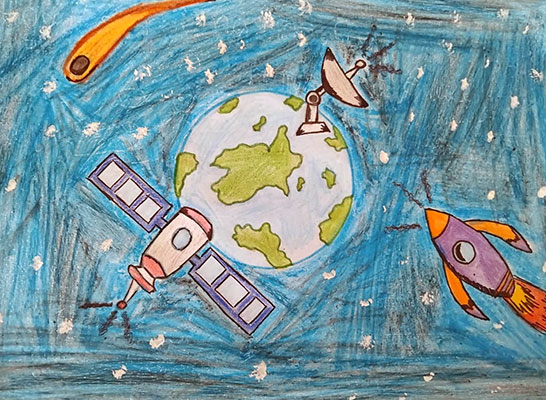
Gianluca, 9

Grisel, 12

Joao, 8

Joshitha, 13
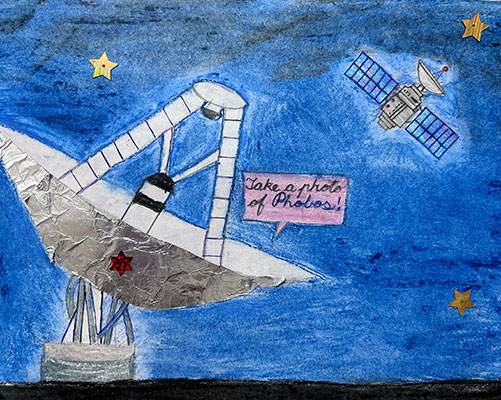
Kanira, 9
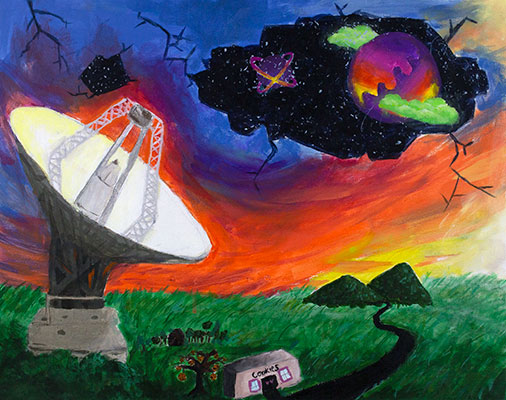
Kate, 13

Liam, 7
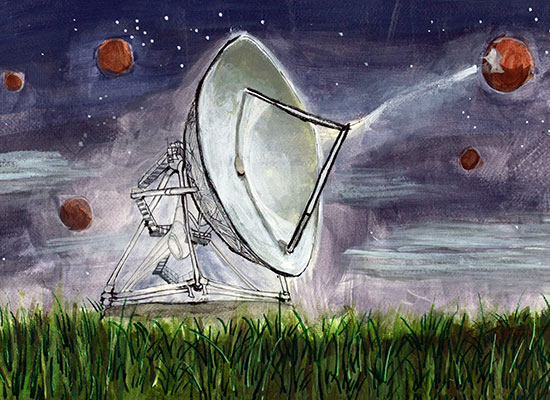
Lyla, 13
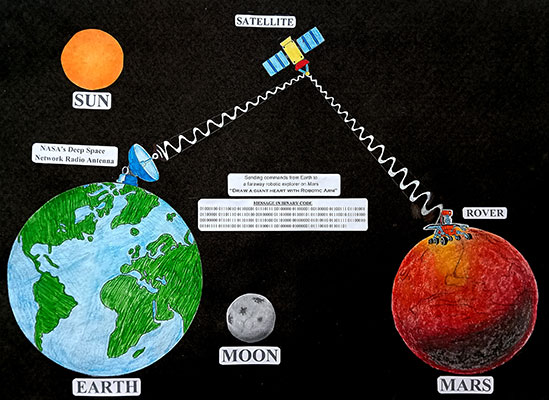
Naman, 11

Olivia, 9

Radu, 9

Sanam, 14

Sharadha, 12

Sofia, 13
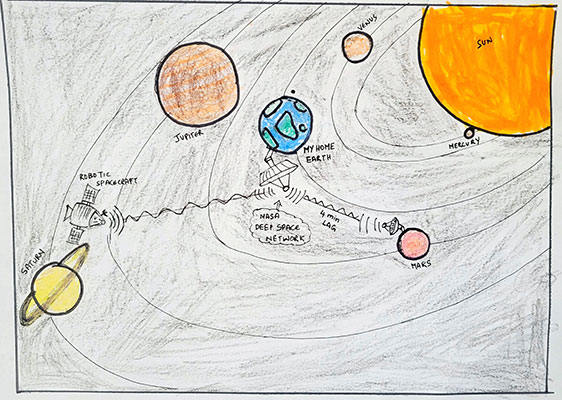
Srimaan, 6

Taifur, 5
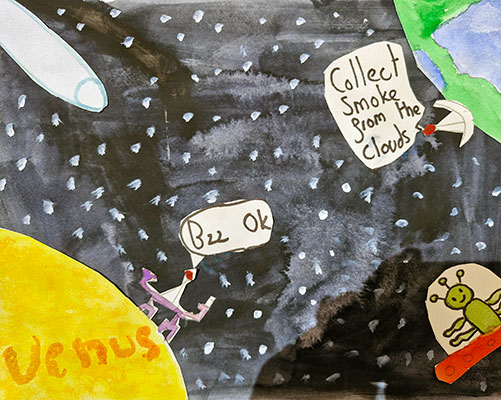
Victoria, 10

Vihaan, 10

Vivaan, 10
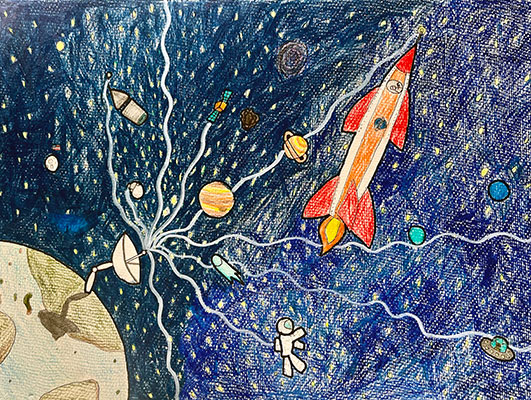
Vratko, 9

Yara, 5
* AUTHORIZATION AND RELEASE FOR PHOTOS, AUDIO AND/OR VIDEO RECORDINGS OF, AND/OR ARTWORK FROM A MINOR CHILD
I hereby grant to the California Institute of Technology (Institute) and its Jet Propulsion Laboratory (JPL) the right to make, use, create derivative works and/or display:
- photos, video and/or audio tape recordings of, my Child and/or
- artwork (in any media, including drawings, photos, music and video creations) created by my Child and submitted to JPL and/or
in any manner or form, and for any lawful purpose at any time. I also grant the Institute to use my Child's name associated with such photos, recordings of my Child or with his/her artwork. I understand that my Child may be photographed and/or video or audio taped verbatim and that the Institute may allow persons external to the Institute to view the pictures or recordings in part or in their entirety. I also understand that any artwork submitted by my Child to the Institute for the Project may be edited, reproduced or displayed publicly at the Institute's discretion. I am fully aware and agree that such use of my Child's image or artwork and name may include posting on publicly available internet sites, including JPL sites and other publicly viewable social media sites. I waive any right that I may have to review or approve of any finished products, or the uses to which such products may be applied. I release and discharge the Institute, its employees, sponsors, and subcontractors from any liability to me by virtue of any representation that may occur in the creation, editing or use of said photos and/or video or audio tape recordings or the editing or use of my Child's artwork.


